

2023 Toyota Prius: How design became the priority over tech
The 2023 Toyota Prius is the fifth generation of the world’s best-known hybrid vehicle. Since it first went on sale in Japan in 1997, the Prius has epitomized high fuel efficiency and the advanced technology of hybrid-electric powertrains.
The current fourth-generation Prius arrived in 2016 and its styling and design were not well-received. But the introduction of a Prius Prime plug-in hybrid version in 2017 and an all-wheel-drive version in 2019 were seen as smart moves to broaden this efficiency icon’s appeal.
The new Prius is due to arrive at dealers in January, yet Toyota’s November launch of the 2023 Prius lineup omitted some key pieces of backstory on why the latest Prius ended up with such a radical exterior but evolutionary tech.
In early December, Green Car Reports sat down with Satoki Oya, chief engineer for the fifth-generation Prius, during a San Diego media drive for the car. These six points below help flesh out some of the background of the 2023 Prius:
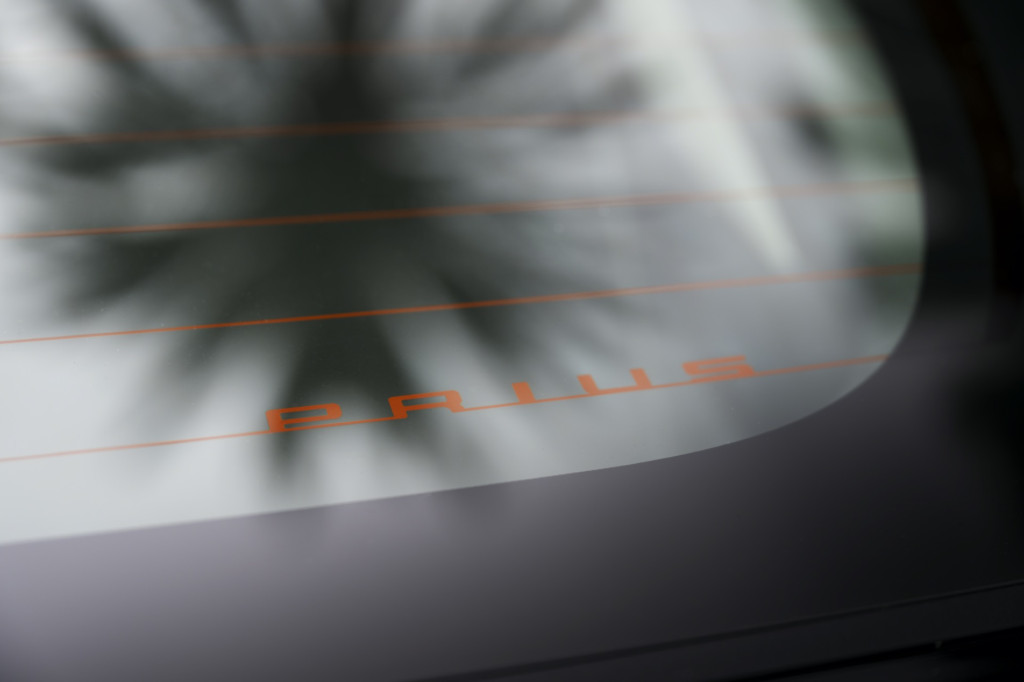
2023 Toyota Prius XLE
(1) Goals for the 2023 Prius took time to establish
The development of the fifth-generation Prius went “according to plan,” Oya told us, “and the team was able to keep on target.”
But, yes, there’s more to it. Asked why the outgoing generation stayed on sale for a seventh model year, Oya acknowledged it had taken time to settle on the future role of the Prius for the 2020s and beyond.
“The role of the new model was not concrete” at first, he suggested. Such a radical design for this iconic vehicle, with its great importance to the company’s technology image, took time to gain approval beyond the project team itself. The goals chosen were to offer both a striking design and performance worthy of that design.
The result gives the Prius even “more importance” in the lineup, Oya said. The new model is striking in its own right, not just because it’s a Prius, plus it gives better performance with the same outstanding 57-mpg fuel efficiency.
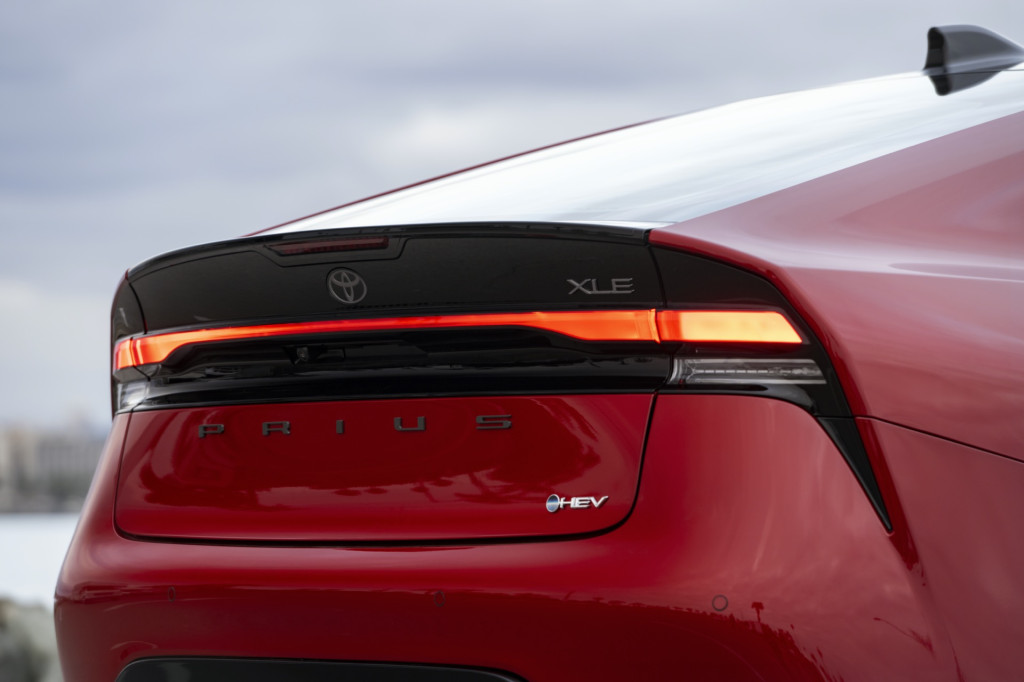
2023 Toyota Prius XLE
(2) Turning the design sketches into a car was a heavy lift
Toyota engineers had never done a mass-production vehicle with a design quite this radical, Oya suggested. And they had to do it while simultaneously increasing performance, reducing overall weight, and complying with more stringent future crash-test requirements.
The overall platform is an evolution of the TNGA (Toyota New Global Architecture) component set first launched on the 2016 Prius. You can think of it as TNGA-2, Oya agreed. The challenge was to use a standard architecture, due to roll into the next generation of millions of Toyotas, while retaining the striking look created by the designers.
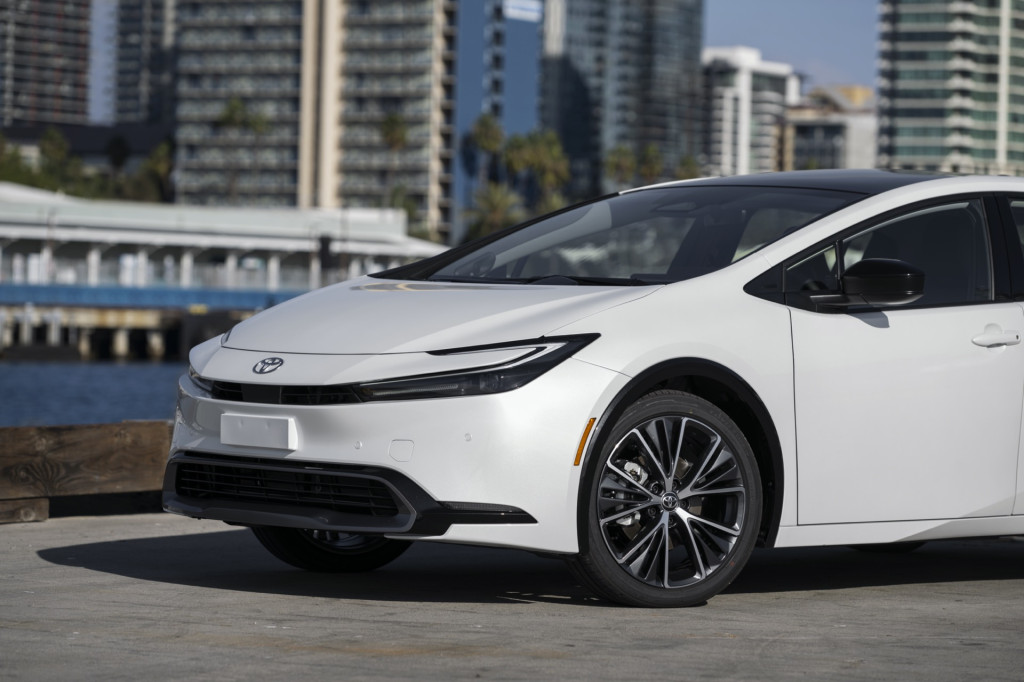
2023 Toyota Prius Limited
(3) The windshield angle was especially challenging
The shape of the 2023 Prius is as close to a pure wedge as any generation has gotten, and a large part of that comes from its steeply raked windshield. While the outgoing model had a rake of 26.3 degrees, the new one is laid back even further, to 21.6 degrees—just half a degree from the 21.1 degrees of the exclusive, high-end Lexus LFA halo sports car. The highest point of the roof is also moved further back on the body.
To make that possible, Oya said, Toyota did a large amount of computer simulation specifically for the structure inside the steep windshield pillar (known as the A-pillar) to enable it to be fabricated out of new, higher-strength steels that made it 1.3 times as strong as the previous structure. That allowed the company to forgo hot stamping for parts of that assembly, saving energy and reducing the carbon footprint associated with manufacturing.
The company also worked with its glass supplier to create a windshield panel longer than for any previous Prius generation. While it didn’t extend into the roof, as a few electric vehicles have done, it was still “tough to manufacture,” Oya suggested.
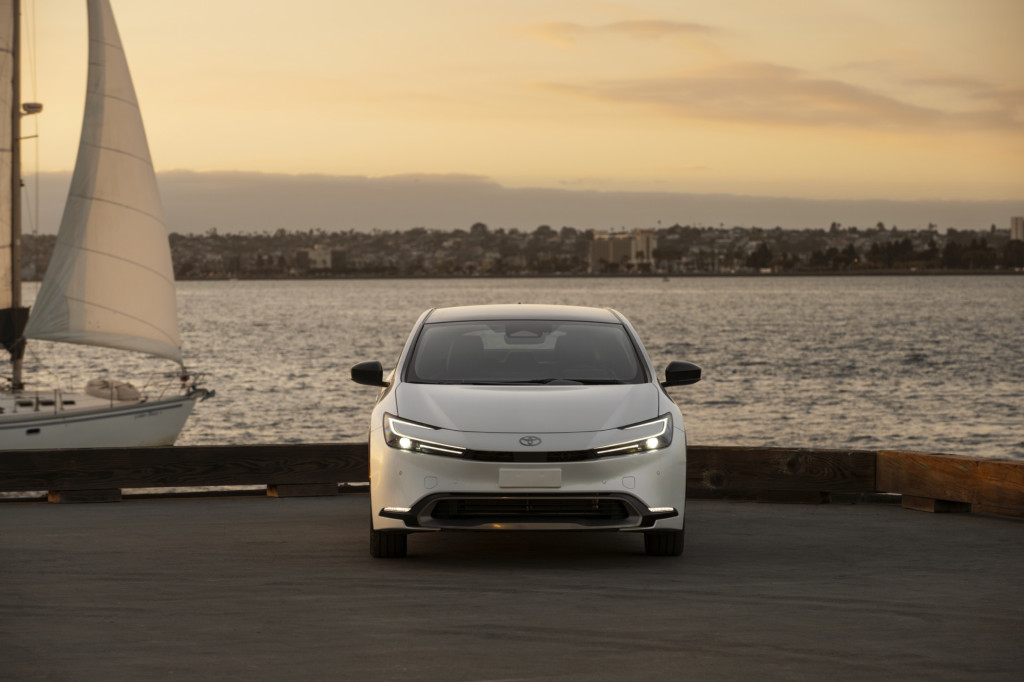
2023 Toyota Prius Limited
(4) Underpinnings had to be redesigned to make the car 2 inches lower
To get a roofline fully two inches lower than the previous generation, Oya noted, required some rethinking about the seating positions to maintain adequate headroom.
In particular, he highlighted the need to redesign the battery pack and the gasoline tank—both under the rear seat—to be shorter in height, allowing the rear seat cushion to sit lower with the same amount of space above it.
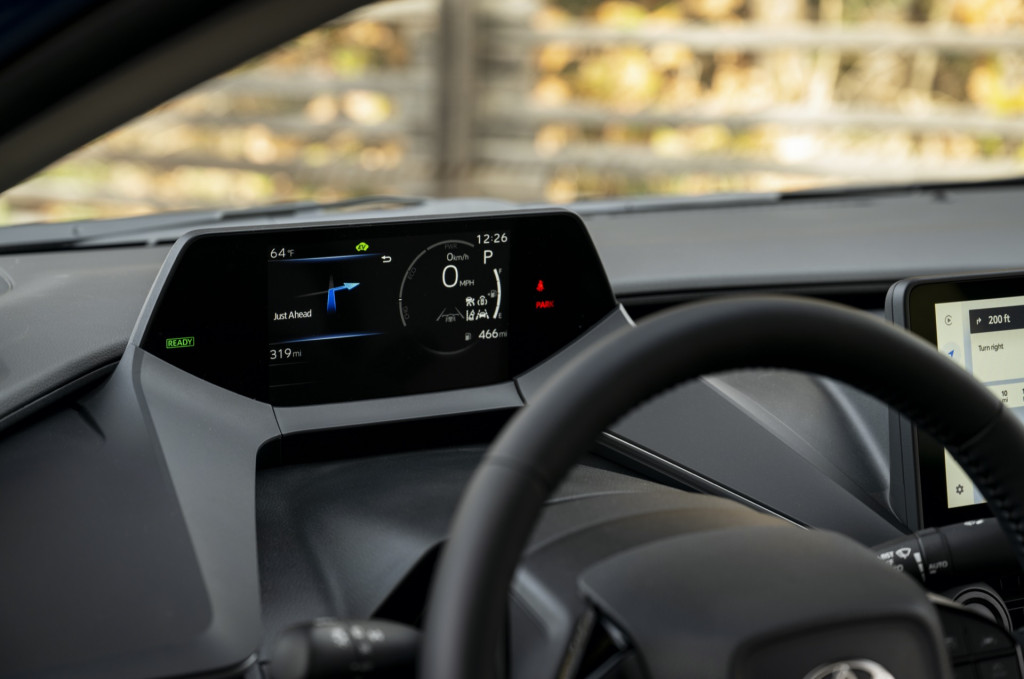
2023 Toyota Prius Limited
(5) The Prius now, finally, has a conventional instrument cluster
As well as their distinctive exterior designs, largely in the service of lowering aerodynamic drag, earlier Priuses were known for unusual interiors—and digital displays centered at the base of the windshield. That’s all gone now.
The 2023 Prius has a relatively conventional, rectangular digital instrument cluster centered behind the steering wheel. It contains what you might expect: a digital speedometer inside a circular power gauge (“Chg”, “Eco”, and “Pwr”), odometer, time, external temperature, miles until empty, and a raft of various indicators and warning lights.
While Oya didn’t explicitly address the reasoning, it’s clear that the Prius now shares its information cluster and infotainment controls with the rest of the Toyota lineup—making it less distinctive but, perhaps, easier to understand at a glance for drivers new to the model.
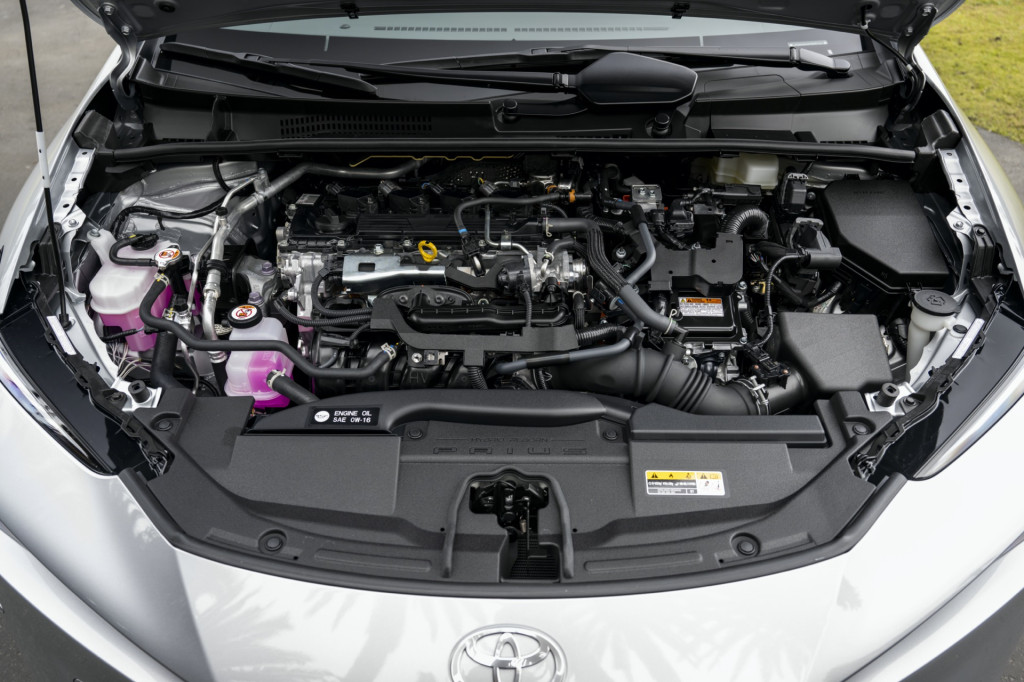
2023 Toyota Prius XLE
(6) The powertrain is evolutionary—but a lot more powerful
This is probably the most predictable of the points we learned from Oya: As is Toyota’s wont, every component was analyzed, refined, and redesigned for continuous incremental improvement. We can’t think of a Prius generation in which that hasn’t been the case.
Here, the inline 4-cylinder engine of the 2023 Prius has a larger displacement—2.0 liters against 1.8 liters—and a higher compression ratio, now 14:1, up from 13:1. Still, its maximum thermal efficiency of 41% is only incrementally higher than the 40% quoted for the 2016 Prius. Similarly, the pair of motor-generators in the hybrid system output more power. The engine is rated at 150 hp, with the combined powertrain at 194 or 196 hp (for front- and all-wheel-drive versions respectively), against 96 hp for the engine and a total powertrain output of 121 hp for last year’s model. That’s a 60% boost, more than any previous Prius iteration.
The lithium-ion cells are a new type, jointly developed with the battery supplier. Oya declined to name that supplier, widely presumed to be Panasonic. Battery capacity is down to 0.9 kwh, versus 1.3 kwh in the previous generation.
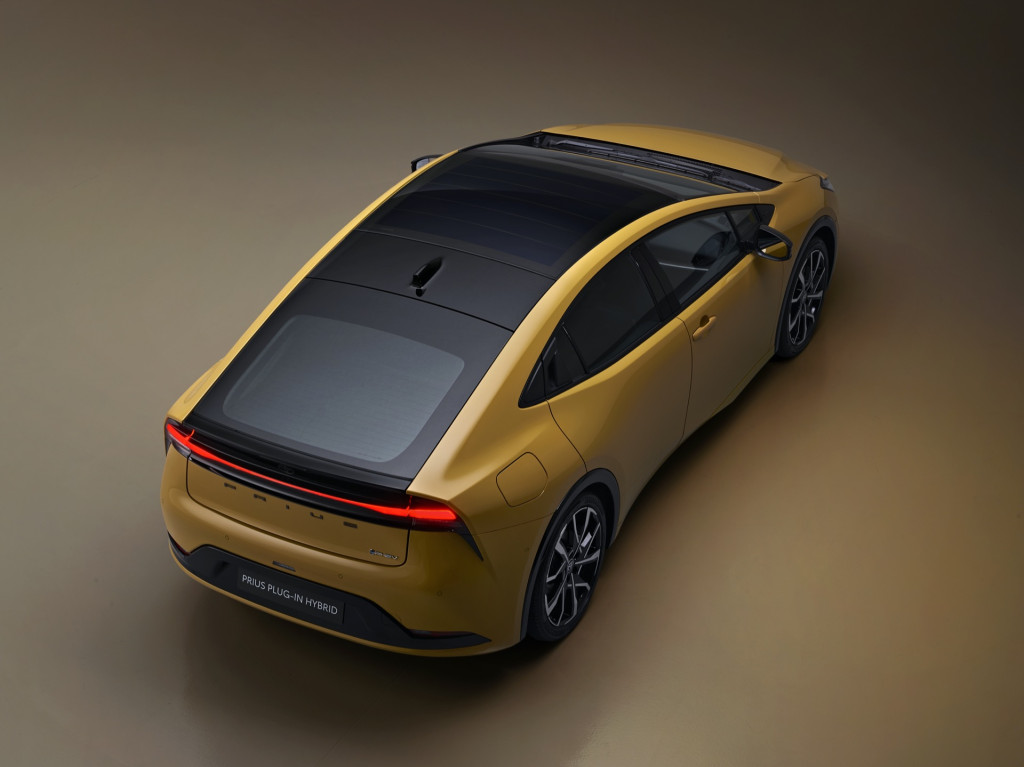
2023 Toyota Prius Prime (Euro spec)
A Prius Prime will be coming for 2024
Inevitably, we had to end our interview with a question about the future of the Prius Prime model. Toyota has already teased specs for it, including the idea that there will be a 50% boost in plug-in electric range versus the outgoing model.
But that, said Oya and other Toyota executives in various phrasings, is a topic we are not discussing today. Expect more details within a few months.
Toyota provided airfare, lodging, and meals to enable Green Car Reports to bring you this first-person drive report.
Add a comment Cancel reply
Comments (0)
Related posts


EV Guide: How to Care for Your Electric and Hybrid Car











